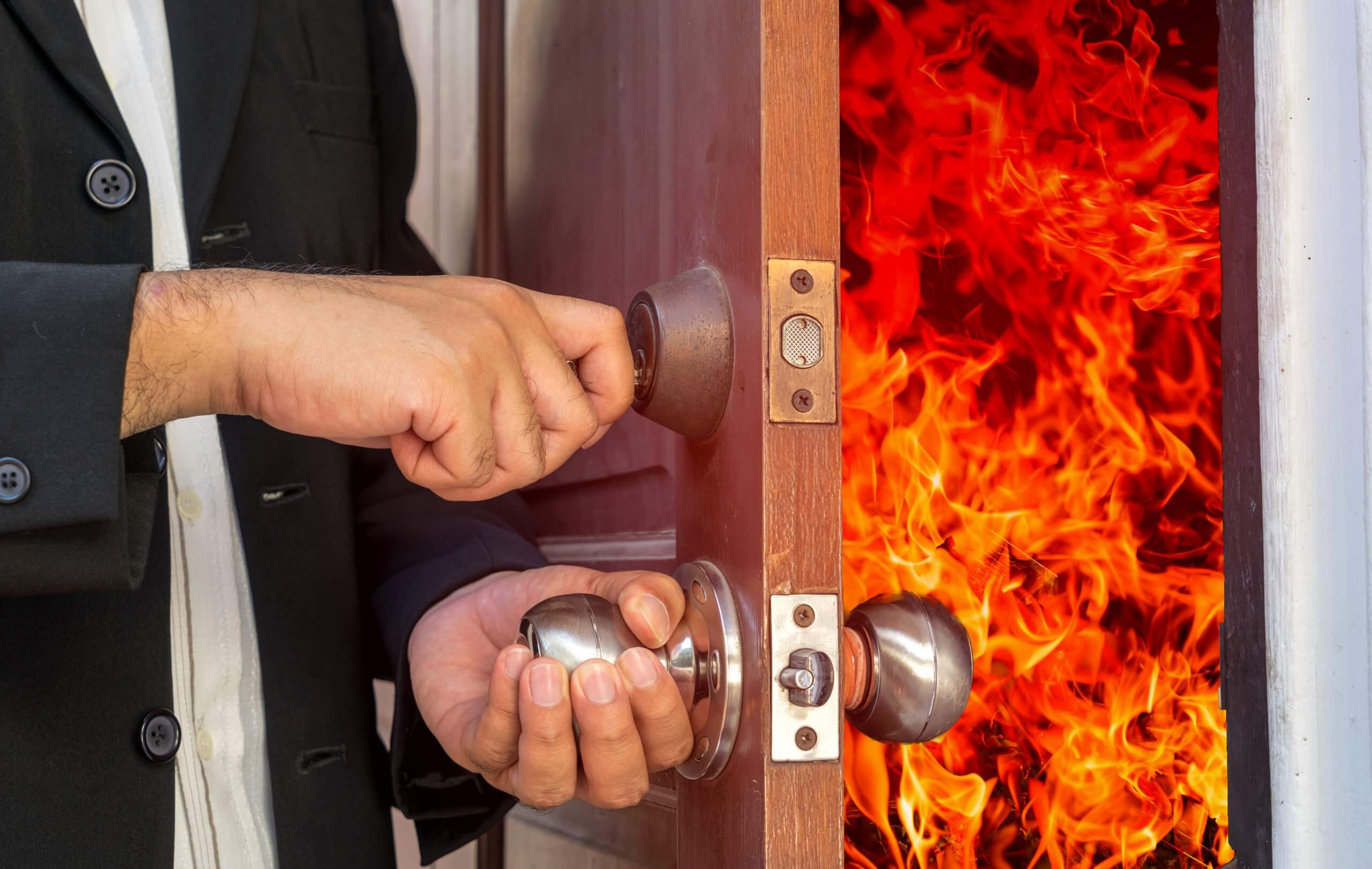
When a fire breaks out, containment is always a huge issue. Fire precautions need to be taken for commercial buildings that often hold hundreds of people. This is why fire and building codes are maintained; to ensure the safety of building inhabitants. Mitigating injuries and fire damage in the event of a blaze are always the top priority.
The type of doors and windows installed in buildings often play a huge role in fire containment. Doors and windows can be specifically manufactured to fit fire ratings. Depending on what fire rating they meet, doors and windows have different fire prevention abilities.
You might hear the terms “fire protective” and “fire resistive” and assume these two phrases are interchangeable. They are not. They actually refer to two very different fire standards. To understand the difference in these two phrases, let’s first examine how fire ratings work.
There are various standards and codes for fire ratings. They often depend on the state or municipality in which you live. The important thing to know is that fire ratings grade passive fire protection systems on their ability to withstand fire. In our case, passive fire protection systems can mean doors or windows.
Fire ratings are usually measured by metrics of time such as minutes. These ratings develop through fire resistance tests. Fire protection systems are exposed to fire to see how long they will hold up under the heat. When a fire preventive door receives a rating of “60 minutes,” this means that the door can withstand fire for over 60 minutes.
CDF Distributors offers commercial fire rated doors with ratings from 20 minutes to 3 hours. Whatever your fire prevention need is, CDF Distributors can fulfill it.
While both fire protective and fire resistant doors and windows are fire rated, one is stronger than the other. Fire protective is the weaker of the two, and is typically rated below 45 minutes.
Most fire protective doors are required to be able to contain fire and smoke. Experts say that the chief differentiator of fire protective doors is that they are not required to be able to contain heat.
Say there is a fire that has been raging in a room for 20 minutes, but it is contained by a fire protective door. If you stand on the other side of the door, you would not be exposed to fire or smoke, but if you put your hand on the door, you would burn your hand from the heat.
Fire resistive doors and windows are typically rated above 60 minutes. This is stronger than fire protective. Like fire protective, fire resistive will contain fire and smoke, but it also must contain heat.
In the same hypothetical scenario above but with a fire resistive door, you could stand on the other side of the door and you will not burn from the heat of the fire. Fire resistive doors and windows block radiant heat and contain it for upwards of 60 minutes.
It matters because you might need to consider fire resistive doors and windows as opposed to fire protective. This will depend on what you are storing in your commercial building.
For instance, in a school science lab there are chemicals that are highly flammable and combustible. These chemicals would need to be protected by fire resistive barriers because they would combust under high heat.
Fire resistive barriers will protect flammable material such as paper, drapes, or clothing from radiant heat. Fire resistive material offers escaping people protection from harmful heat. It also gives firefighters additional time to put out the flames.
Fire protective and fire resistive barriers are both fire proof, but the only way you can know what is right for your building is by consulting your local fire codes. Make sure you research your local fire codes and make all fire prevention decisions to be in compliance with your codes.
CDF Distributors offers fire rated doors made from wood and steel. CDF Distributor’s doors can meet any fire code requirements that you need. Get your free quote today.